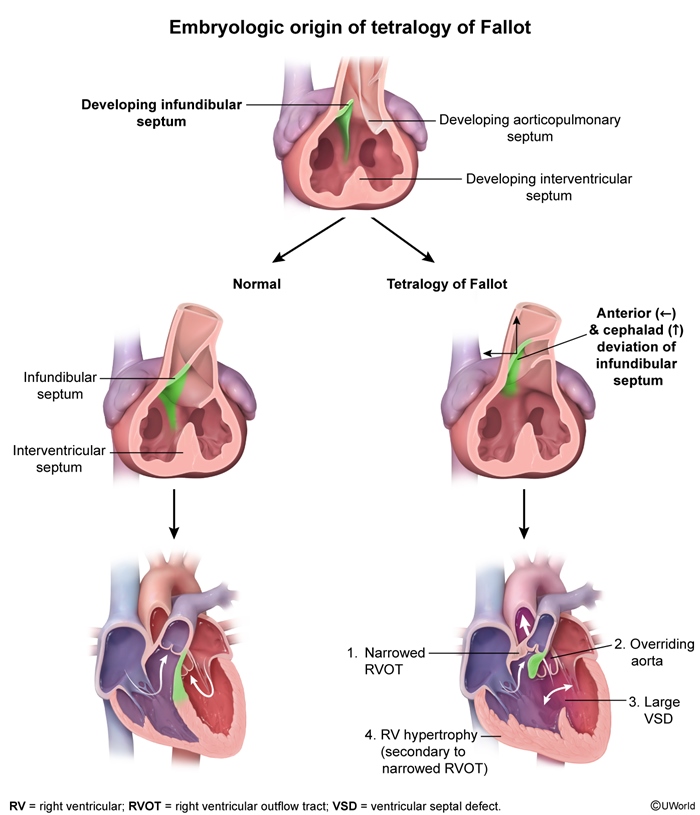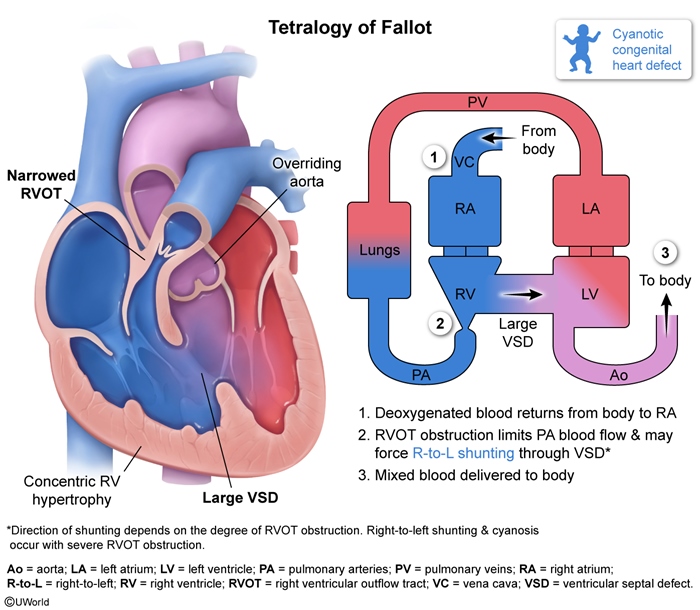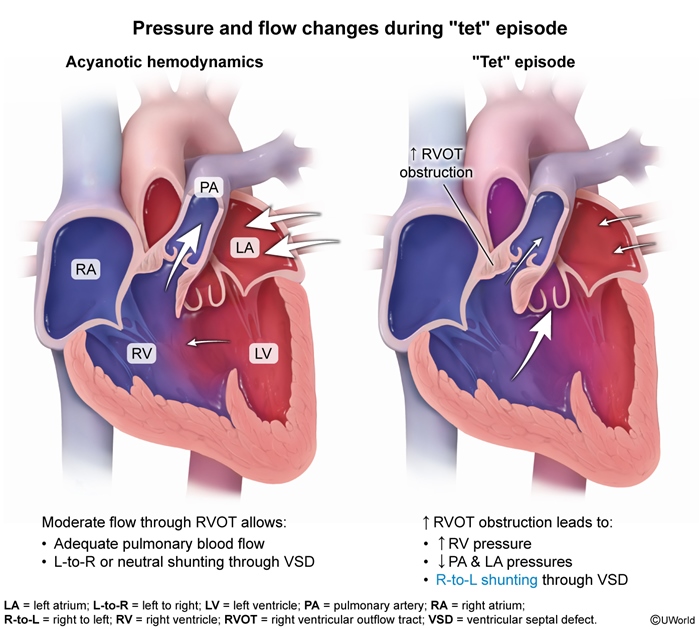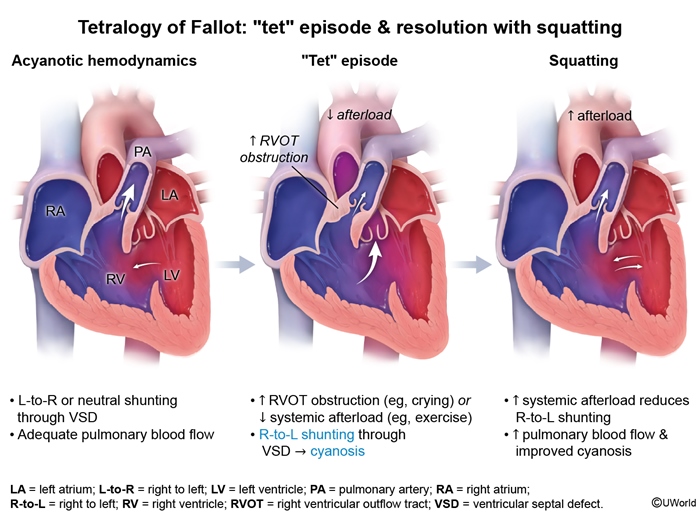Tetralogy Of Fallot
Article Sections
Introduction
Tetralogy of Fallot (ToF) is one of the most common congenital heart defects; it accounts for up to 10% of congenital heart disease cases and occurs with equal frequency in males and females. ToF results from disrupted embryonic development that leads to 4 characteristic abnormalities:
- Narrowed right ventricular outflow tract (RVOT).
- Large ventricular septal defect (VSD).
- Overriding aorta (ie, the aortic root is slightly shifted toward the septum and overlies the VSD).
- Concentric right ventricular (RV) hypertrophy.
The clinical presentation of ToF depends on the severity of the RVOT obstruction, with most patients developing cyanosis during infancy or childhood due to right-to-left shunting through the large VSD. Recognition of ToF is important because timely surgical repair is needed to reduce morbidity and prevent mortality.
Continue Learning with UWorld
Get the full Tetralogy Of Fallot article plus rich visuals, real-world cases, and in-depth insights from medical experts, all available through the UWorld Medical Library.
Figures




